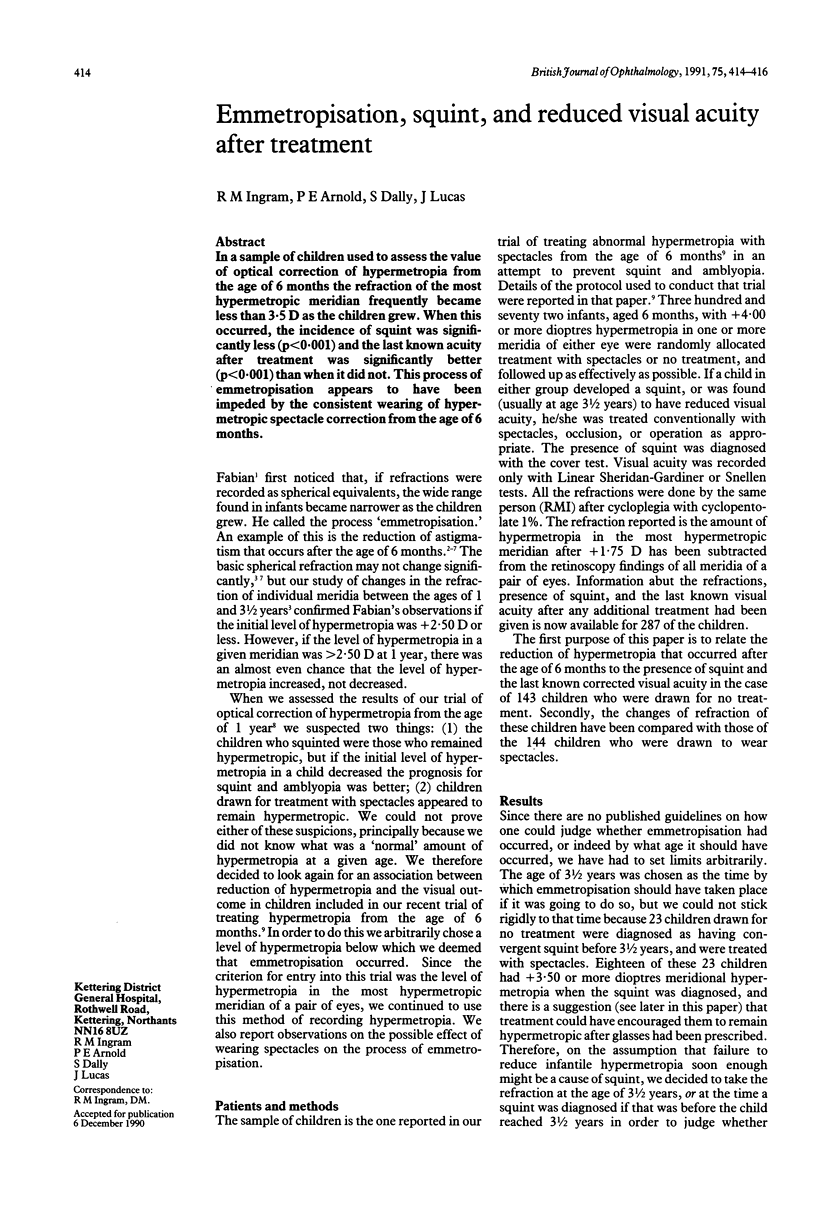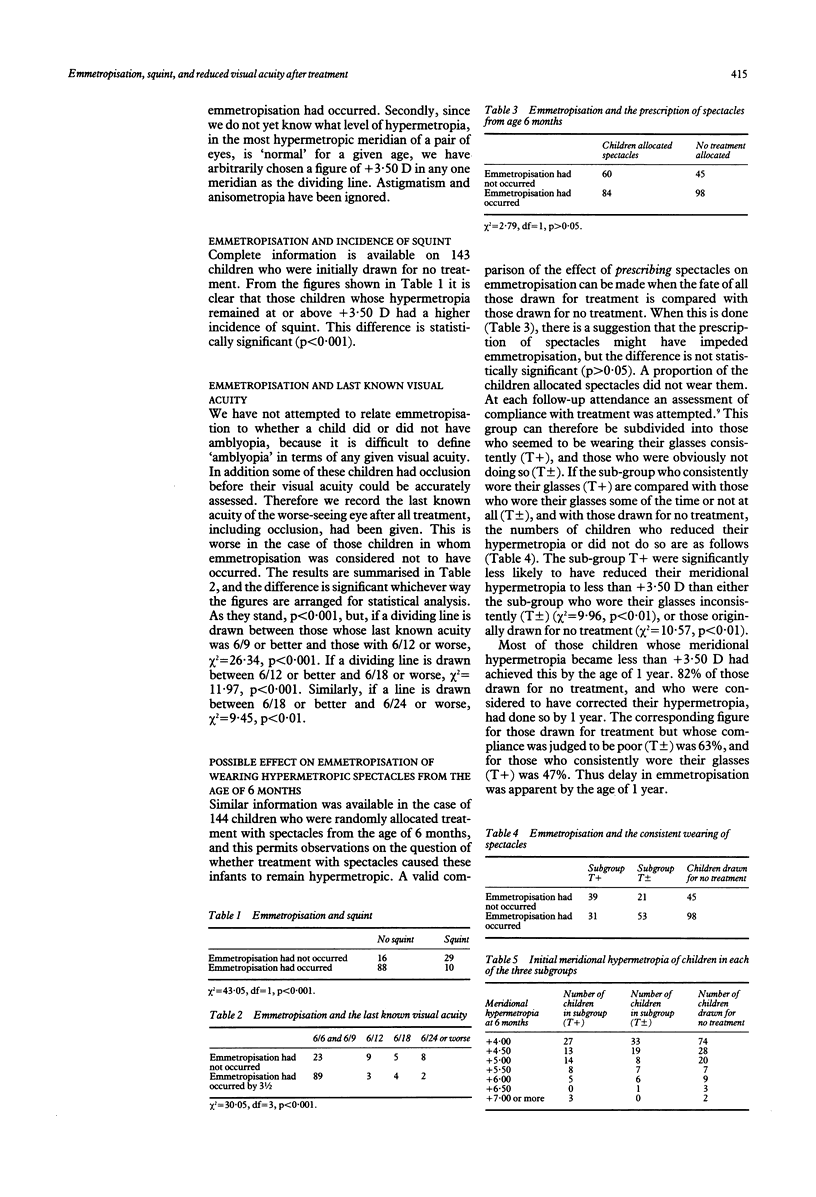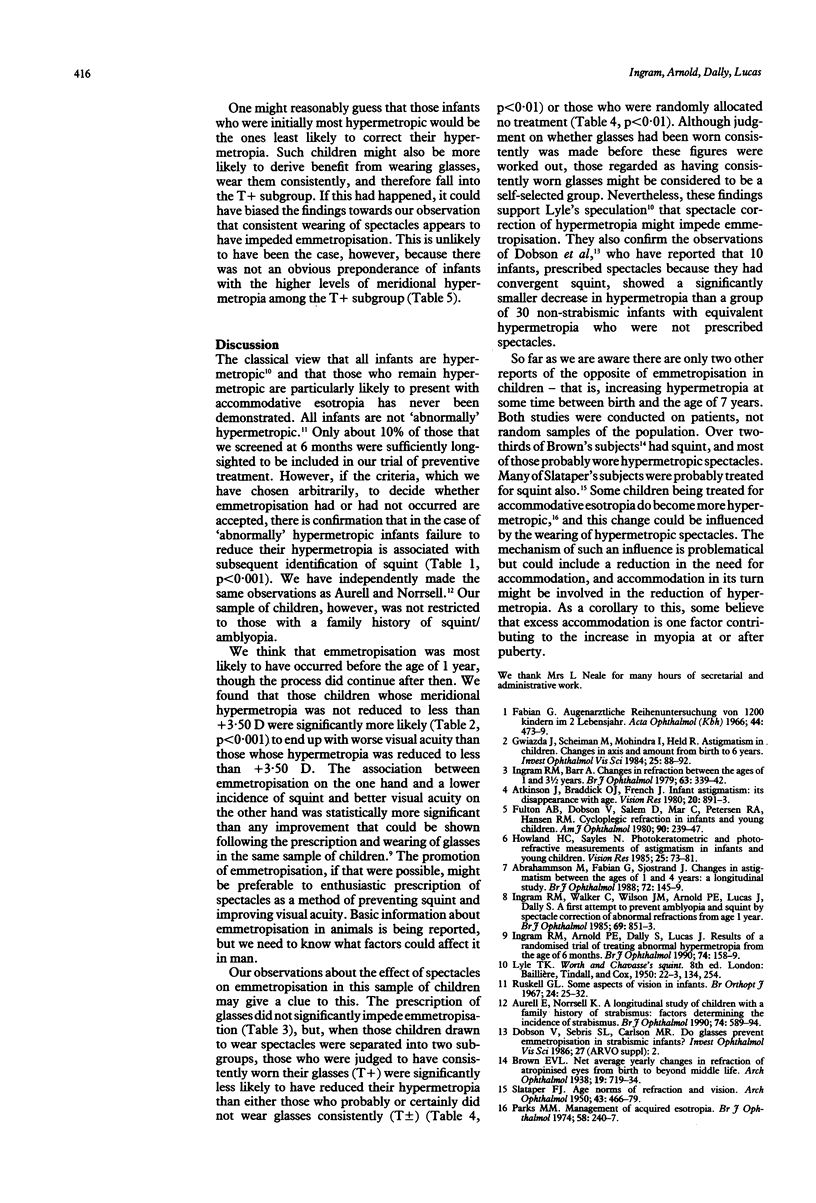Abstract
In a sample of children used to assess the value of optical correction of hypermetropia from the age of 6 months the refraction of the most hypermetropic meridian frequently became less than 3.5 D as the children grew. When this occurred, the incidence of squint was significantly less (p less than 0.001) and the last known acuity after treatment was significantly better (p less than 0.001) than when it did not. This process of emmetropisation appears to have been impeded by the consistent wearing of hypermetropic spectacle correction from the age of 6 months.
Full text
PDF


Selected References
These references are in PubMed. This may not be the complete list of references from this article.
- Abrahamsson M., Fabian G., Sjöstrand J. Changes in astigmatism between the ages of 1 and 4 years: a longitudinal study. Br J Ophthalmol. 1988 Feb;72(2):145–149. doi: 10.1136/bjo.72.2.145. [DOI] [PMC free article] [PubMed] [Google Scholar]
- Atkinson J., Braddick O., French J. Infant astigmatism: its disappearance with age. Vision Res. 1980;20(11):891–893. doi: 10.1016/0042-6989(80)90070-x. [DOI] [PubMed] [Google Scholar]
- Aurell E., Norrsell K. A longitudinal study of children with a family history of strabismus: factors determining the incidence of strabismus. Br J Ophthalmol. 1990 Oct;74(10):589–594. doi: 10.1136/bjo.74.10.589. [DOI] [PMC free article] [PubMed] [Google Scholar]
- Fabian G. Augenärztliche Reihenuntersuchung von 1200 Kindern im 2. Lebensjahr. Acta Ophthalmol (Copenh) 1966;44(3):473–479. doi: 10.1111/j.1755-3768.1966.tb08061.x. [DOI] [PubMed] [Google Scholar]
- Fulton A. B., Dobson V., Salem D., Mar C., Petersen R. A., Hansen R. M. Cycloplegic refractions in infants and young children. Am J Ophthalmol. 1980 Aug;90(2):239–247. doi: 10.1016/s0002-9394(14)74861-5. [DOI] [PubMed] [Google Scholar]
- Gwiazda J., Scheiman M., Mohindra I., Held R. Astigmatism in children: changes in axis and amount from birth to six years. Invest Ophthalmol Vis Sci. 1984 Jan;25(1):88–92. [PubMed] [Google Scholar]
- Howland H. C., Sayles N. Photokeratometric and photorefractive measurements of astigmatism in infants and young children. Vision Res. 1985;25(1):73–81. doi: 10.1016/0042-6989(85)90082-3. [DOI] [PubMed] [Google Scholar]
- Ingram R. M., Arnold P. E., Dally S., Lucas J. Results of a randomised trial of treating abnormal hypermetropia from the age of 6 months. Br J Ophthalmol. 1990 Mar;74(3):158–159. doi: 10.1136/bjo.74.3.158. [DOI] [PMC free article] [PubMed] [Google Scholar]
- Ingram R. M., Barr A. Changes in refraction between the ages of 1 and 3 1/2 years. Br J Ophthalmol. 1979 May;63(5):339–342. doi: 10.1136/bjo.63.5.339. [DOI] [PMC free article] [PubMed] [Google Scholar]
- Ingram R. M., Walker C., Wilson J. M., Arnold P. E., Lucas J., Dally S. A first attempt to prevent amblyopia and squint by spectacle correction of abnormal refractions from age 1 year. Br J Ophthalmol. 1985 Nov;69(11):851–853. doi: 10.1136/bjo.69.11.851. [DOI] [PMC free article] [PubMed] [Google Scholar]
- Parks M. M. Management of acquired esotropia. Br J Ophthalmol. 1974 Mar;58(3):240–247. doi: 10.1136/bjo.58.3.240. [DOI] [PMC free article] [PubMed] [Google Scholar]


